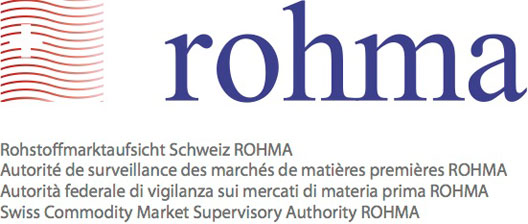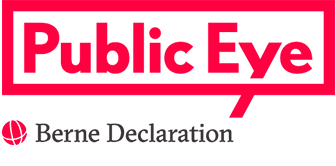ROHMA regulates through ordinances, when this is provided for in the Commodities Act, and through circulars which explain how the Commodity Market Supervisory Authority legislation is to be applied. It does this to the extent that is necessary to fulfil the goals of supervision.
In particular, ROHMA concentrates on:
• the goal of contributing to the reduction of the resource curse and to the mobilization of resources for development and poverty reduction in commodity-rich developing countries through the supervision and regulation of Swiss commodity producers and trading companies, as well as gold refiners and importers;
• the different business activities and risks of the supervised companies;
• the relevant international standards and the development of the international regulatory environment;
• the goal of preserving the reputation of the commodity trading hub and thereby preserving Switzerland’s competitiveness.
ROHMA ensures that the regulatory process is transparent and that all those affected have a say in it.
Guidelines for the regulation of the commodity sector
Observation
ROHMA observes both national and international developments in the commodity markets in order to identify and react to relevant risks as early as possible. It follows the development of the international regulatory environment and - in coordination with the Financial Market Supervisory Authority FINMA, the Swiss National Bank (SNB) and the State Secretariat for International Financial Matters SIF - the development of the international financial market regulation in so far as this has an impact on the regulation of the commodity sector (e.g. commodity derivatives).
Triggers
With regard to the objectives of regulation and supervision of the commodity sector, a regulatory process may be triggered in particular by the findings of investigations by ROHMA, by market developments, by expectations of politicians or the public, as well as by national or international regulatory developments.
Options for action
Before ROHMA regulates, it first clarifies the problem, and establishes the objectives as well as the urgency for action. It assesses the impact of individual options and examines how regulation might be effectively implemented. It evaluates the room for maneuver and the need for action (e.g. de facto, political, legal, economic, international, and reputational).
Impact assessment
ROHMA assesses the likelihood for each course of action of having any unwanted side effects and how these might be minimized. In doing do, ROHMA takes particular account of any potentially significant impacts on competition, as well as the structure and behaviour of the market to prevent any circumvention of the proposed regulation. ROHMA also carefully considers the different business activities and risks the companies under its supervision take.
Planning and Information
Where ROHMA intends to regulate, it will publish the planned course of action, the time required, the necessary resources and details of its responsibilities. ROHMA will keep the public and the companies informed about all planned and pending regulatory projects regularly and in good time.
Cooperation with FINMA, SNB, SECO and SIF
ROHMA cooperates with the Financial Market Supervisory Authority FINMA, the Swiss National Bank (SNB), the State Secretariat for Economic Affairs SECO and the State Secretariat for International Financial Matters SIF, whenever a regulatory process might affect the Financial Market Authority. Where, following observations and clarifications ROHMA concludes that regulation at the legislative level or by the Federal Council is necessary, it will inform the Federal Office of Justice (FOJ). ROHMA supports the FOJ in its regulatory work and submits appropriate proposals to it.
Participation by affected parties
ROHMA consults with all affected parties as well as other authorities (e.g. DEZA, BAFU) and civil society on any drafts. This is done through public or consultative hearings on regulatory projects. A hearing may be waived if the change in ROHMA-regulation is required by law and there is little room for manoeuvre in the implementation, or where the amendment is of a purely technical nature.
Consistency
ROHMA strives for consistency with existing and other planned regulations, and sets appropriate priorities.
Transparency
ROHMA will provide information as early as possible on pending regulatory projects and their progress. These are developed into a draft with accompanying explanatory text, which is then provided to the public at a hearing, giving interested parties an opportunity to submit their observations. The comments received are then published together with a report of the hearing and, as a rule, the regulation is adopted. The consultation report includes in particular ROHMA’s reactions to the relevant issues raised in the comments.
Adoption
Prior to the adoption of a regulation, ROHMA examines in particular the issues raised at the hearing, transition-related issues and also whether it would be worthwhile carrying out pilot projects, testing or similar means. Adopted regulations are quickly published on the website.
Implementation and enforcement
ROHMA plans to implement regulation in a timely manner. It also provides further assistance through information and education, as well as by providing answers to questions from supervised institutions or from civil society. It checks whether a regulation is implemented and where necessary puts companies forcibly in line through enforcement.
Review
ROHMA reviews adopted regulations after they have entered into force. In this way, it can assess the exact effects of a particular piece of legislation. Where the original problem no longer exists, ROHMA may amend or withdraw regulation. Furthermore, ROHMA reviews existing regulations periodically to ensure their effectiveness and makes adjustments where necessary.



